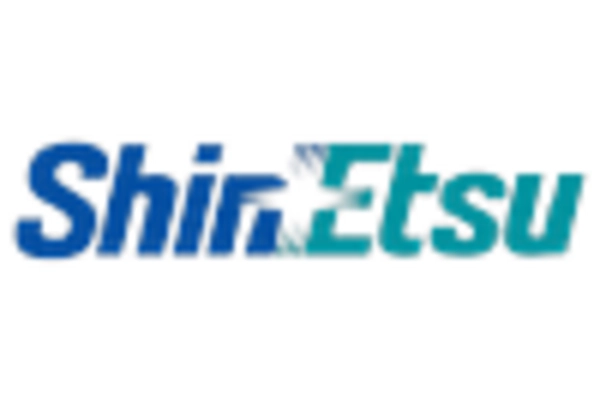Expansion of Consumer Electronics
The consumer electronics market in Europe is rapidly evolving, leading to an increased demand for silicone rubber components. Silicone rubber is favored for its excellent electrical insulation properties and ability to withstand extreme temperatures, making it ideal for applications in smartphones, wearables, and other electronic devices. The silicone rubber market is anticipated to grow by approximately 4.8% annually, driven by the continuous innovation in consumer electronics and the need for durable, flexible materials. As manufacturers seek to enhance product performance and longevity, silicone rubber's role in this sector is likely to become more prominent, reflecting the broader trends in technology and consumer preferences.
Growth in Healthcare Applications
The healthcare sector in Europe is witnessing a surge in the adoption of silicone rubber due to its biocompatibility and resistance to chemicals. Silicone rubber is extensively used in medical devices, prosthetics, and drug delivery systems, which require materials that are safe for human contact and can withstand sterilization processes. The silicone rubber market is expected to expand significantly, with a projected growth rate of around 6% annually over the next five years. This growth is attributed to the increasing demand for advanced medical technologies and the rising prevalence of chronic diseases, necessitating innovative healthcare solutions that utilize silicone rubber.
Rising Demand in Automotive Sector
The automotive sector in Europe is experiencing a notable increase in demand for silicone rubber, primarily due to its superior properties such as heat resistance, flexibility, and durability. As manufacturers strive to enhance vehicle performance and safety, silicone rubber is increasingly utilized in various applications, including seals, gaskets, and insulation materials. The silicone rubber market is projected to grow at a CAGR of approximately 5.5% from 2025 to 2030, driven by the automotive industry's shift towards lightweight materials and electric vehicles. This transition necessitates materials that can withstand higher temperatures and provide better insulation, further solidifying silicone rubber's position in the automotive supply chain.
Increased Focus on Energy Efficiency
The European Union's commitment to energy efficiency and sustainability is influencing various industries, including the silicone rubber market. As companies strive to reduce their carbon footprint, silicone rubber is increasingly used in energy-efficient applications such as insulation materials for buildings and HVAC systems. The silicone rubber market is projected to grow at a rate of 5% annually, driven by the demand for materials that contribute to energy savings and environmental sustainability. This trend aligns with the EU's regulatory framework aimed at promoting energy-efficient solutions, thereby enhancing the market potential for silicone rubber in construction and related sectors.
Technological Innovations in Manufacturing
Technological advancements in manufacturing processes are significantly impacting the silicone rubber market in Europe. Innovations such as 3D printing and advanced molding techniques are enabling manufacturers to produce silicone rubber products with greater precision and efficiency. This shift is likely to enhance product quality and reduce production costs, fostering a more competitive market landscape. The silicone rubber market is expected to benefit from these technological improvements, with a projected growth rate of around 5.2% over the next few years. As manufacturers adopt these new technologies, the potential for customized solutions and rapid prototyping will likely expand, further driving market growth.
















Leave a Comment